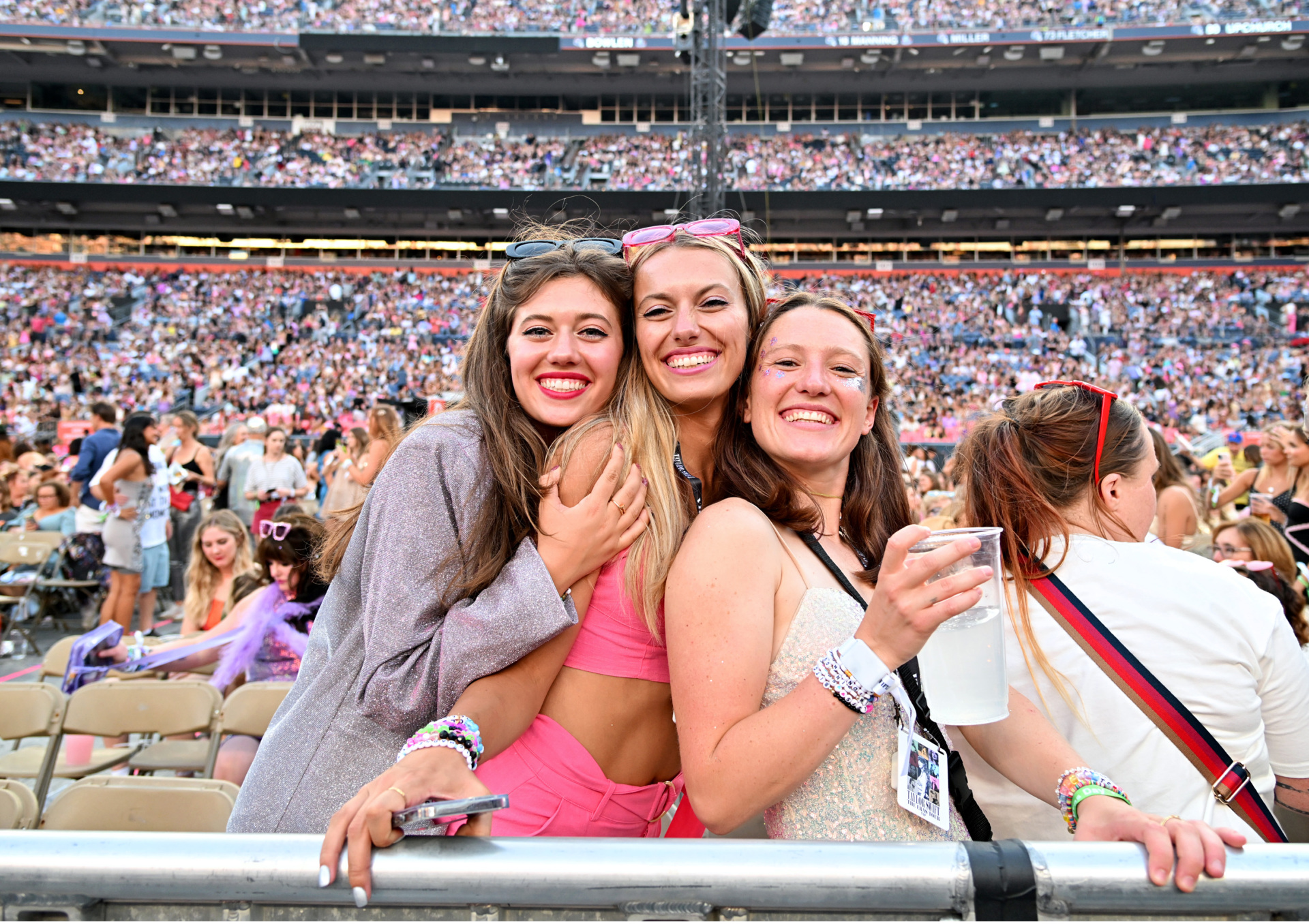Breitbart Business Digest: Taylor Swift’s (Not So) Cruel Summer Economy
The Taylor Swift Era
Let’s face it. This is Taylor Swift’s economy. The rest of us just work in it.
The reigning monarch of American music announced this week that a film version of her record-smashing Eras concert tour would be released this October in AMC theaters. Shares of AMC jumped on the news. As of Friday, the share price was up 9 percent. (They’re still down more than 60 percent year to date, though.)
Last December, Billboard estimated that the Eras tour would bring in $590 million in ticket sales for the announced 52 tour dates. This would have made it the fourth highest grossing tour, according to Billboard estimates. However, that’s somewhat misleading because the tours ahead of hers lasted for years, including U2’s $736 million tour from 2009-2011, and Ed Sheeran’s $736 million 2017-2019 tour.
The top-grossing tour so far is Elton John’s “Farewell Yellow Brick Road” tour. It has brought in $776 million, according to Billboard. But it has been going on since 2018 (with a pandemic interruption from 2020 through 2021) and may go on until Sir Elton really does reach the end of the road.
(Note: these are all nominal figures. In inflation-adjusted terms, it is likely that the list of top sellers would look very different and include many older acts.)

Taylor Swift performs onstage during “Taylor Swift | The Eras Tour ” at Paycor Stadium on June 30, 2023, in Cincinnati, Ohio. (Taylor Hill/TAS23/Getty Images)
Since Billboard’s original Eras estimate, Swift’s tour has nearly doubled in size. Billboard estimates that it will take in around $1 billion in sales. Some analysts think that number could be even higher, as much as $1.4 billion.
Even that understates what people are spending to see Taylor Swift. The U.S. face value of Eras tour tickets ranges between $49 to $499. The average secondary market was $3,801 as of July 10, according to music site Pitchfork, which relied on data from analytics firm TicketIQ. Multiply that by the average of 54,000 fans attending every stop of her concert and you are talking serious money.
The government data indicate that Americans are spending a lot more on live entertainment this summer than last summer. The personal consumption expenditure (PCE) data for July released this week showed that spending on live entertainment excluding sports was up 48.7 percent compared with a year ago, a jump from $28.3 billion to $42.1 billion.

Fans attend “Taylor Swift | The Eras Tour” at Empower Field At Mile High on July 14, 2023, in Denver, Colorado. (Tom Cooper/TAS23/Getty Images)
Before you roll your eyes and blame inflation, the data indicates that price increases are playing only a small role. Compared with a year ago, prices for live entertainment ex-sports are up 2.4 percent, according to the personal consumption expenditure price index. In other words, there’s been a real expansion in the consumption of concerts during this era of Swift.
The Skinny on Prescription Drug Sales
Americans are also spending a lot more on prescription drugs this summer than last summer.
This week’s personal consumption expenditure release showed that spending on prescription drugs was up 9.8 percent in July compared with the same month a year earlier.
This is unlikely to be the result of people being much less healthy than they were a year ago. And it is not the case that inflation is responsible for most of the increase. The PCE price index for prescription drugs is up 2.8 percent. That’s a steep increase but not enough to explain why we’re spending so much at the pharmaceutical counter.
It’s very likely that the surge in spending is being driven by purchases of GLP-1 diabetes drugs that are increasingly being used for weight loss. In their earnings calls this summer, large retailers with pharmacy businesses—including Walmart, Kroger, and Rite Aid—said that increased demand for weight loss drugs helped boost sales in the second quarter.
“We still expect food, consumables, and health and wellness, primarily due to the popularity of some GLP-1 drugs, to grow as a percent total in the back half,” Walmart CEO Doug McMillon said last month.
Rite Aid CFO Matthew Schroeder said that his company’s rise in pharmacy sales and its improved full-year revenue guidance was “due to the increase in sales volume in Ozempic and other high-dollar GLP-1s.”
A Goldilocks Jobs Report
Somehow between popping diet pills and going to concerts, Americans still found time to work more in August.
Average weekly hours increased by 0.1 hour to 34.4 hours in August. Payrolls expanded by a solid 187,000, near the top of the range of estimates and above the consensus of 170,000.
The unemployment rate climbed to 3.8 percent as more people entered the workforce looking for jobs. The labor force participation rate rose by 0.2 percentage points to 62.8 percent, after being flat since March. And no wonder. Those Taylor Swift Tickets and Ozempic pills are not going to pay for themselves.
Wage growth was a moderate 0.2 percent for the month, a downshift from July. Compared with a year ago, average hourly earnings are up 4.3 percent. That’s still too high to be consistent with two percent inflation but it is moving in the right direction.
The takeaway from the jobs report is that it supports the soft-landing thesis for the economy. It certainly puts no pressure on the Fed to raise rates.
From the Fed’s perspective, this is “what you really, really want,” as one Wall Street analyst (echoing those pop icons from another era, the Spice Girls) put it. Job creation is robust but slower, workers are being drawn back into the labor force, wage growth is cooling, and yet joblessness is scarce. Goldilocks is supping happily.





Comments are closed.